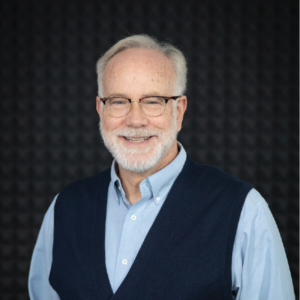The Image of God and Human Community
Then God said, ‘Let us make humankind in our image, according to our likeness; and let them have dominion over the fish of the sea, and over the birds of the air, and over the cattle, and over all the wild animals of the earth, and over every creeping thing that creeps upon the earth.’ So God created humankind in his image, in the image of God he created them; male and female he created them.”
Genesis 1:26-27
Each human being bears the image of God. This fundamental truth shapes our lives and relationships. It tells us that all human beings, including ourselves, have intrinsic worth and purpose.
Yet, as we pay close attention to Genesis 1:26-27, we see that God’s image is not revealed only through individual persons. The divine image is also seen in human community, especially the community represented by male and female.
In verse 26, God speaks in the first person plural, saying, “Let us make humankind in our image.” As you would expect, theologians debate the precise meaning of this plural. God may be speaking in the royal “we” or to the host of heaven. The plural may point to God’s complex nature as one God who creates by means of the Spirit and spoken word (1:2-3). Christian interpreters often see in “let us” the implied presence of the Trinity, with “us” representing Father, Son, and Holy Spirit.
Verse 27 adds to the richness of the divine plural in its description of the creation of human beings: “So God created humankind in his image, in the image of God he created them; male and female he created them.” The underlying Hebrew could be translated more literally: “So God created man/humankind [adam] in his image, in the image of God he created him [otho]; male and female he created them [otham].” In this verse, God created “man/humankind/him” (adam and otho are singular in Hebrew) and “them” (otham is plural in Hebrew) as “male and female.” In other words, the image of God is seen not just in an individual person but also in humankind as male and female. To put it more generally, God’s image is seen in human community as well as in distinct human persons.
Much could be said about the implications of God’s image seen in “them,” in the community of male and female. Whatever we make of this, surely the “usness” of God’s image underscores how essential relationships are to our lives. However much we are like God on our own, we fully bear God’s image only as we live in community with others. This truth sets the stage for all that is to follow in Scripture, even as it encourages us to see our relationships with others in a new light.
QUESTIONS TO CONSIDER:
If God’s image is seen in humankind as male and female, what does this suggest about God? What does it suggest about our relationships with each other? What does it suggest about how we work with others?
PRAYER:
Gracious God, again we thank you for creating us in your image. Today, we are reminded that your image is not captured fully in the solitary individual but also and necessarily in human community. In some astounding way, our relationships with others reflect who you are as God.
As we seek to live faithfully as human beings created in your image, may we see you in the interplay of our relationships. May your reality shape our community, so that we might be more like you each day. Amen.
P.S. If you’re interested in pursuing further the line of thinking in this devotion, I would recommend a book by my Fuller colleague Tod Bolsinger: It Takes a Church to Raise a Christian: How the Community of God Transforms Lives.

Mark D. Roberts
Senior Strategist
Dr. Mark D. Roberts is a Senior Strategist for Fuller’s Max De Pree Center for Leadership, where he focuses on the spiritual development and thriving of leaders. He is the principal writer of the daily devotional, Life for Leaders,...


